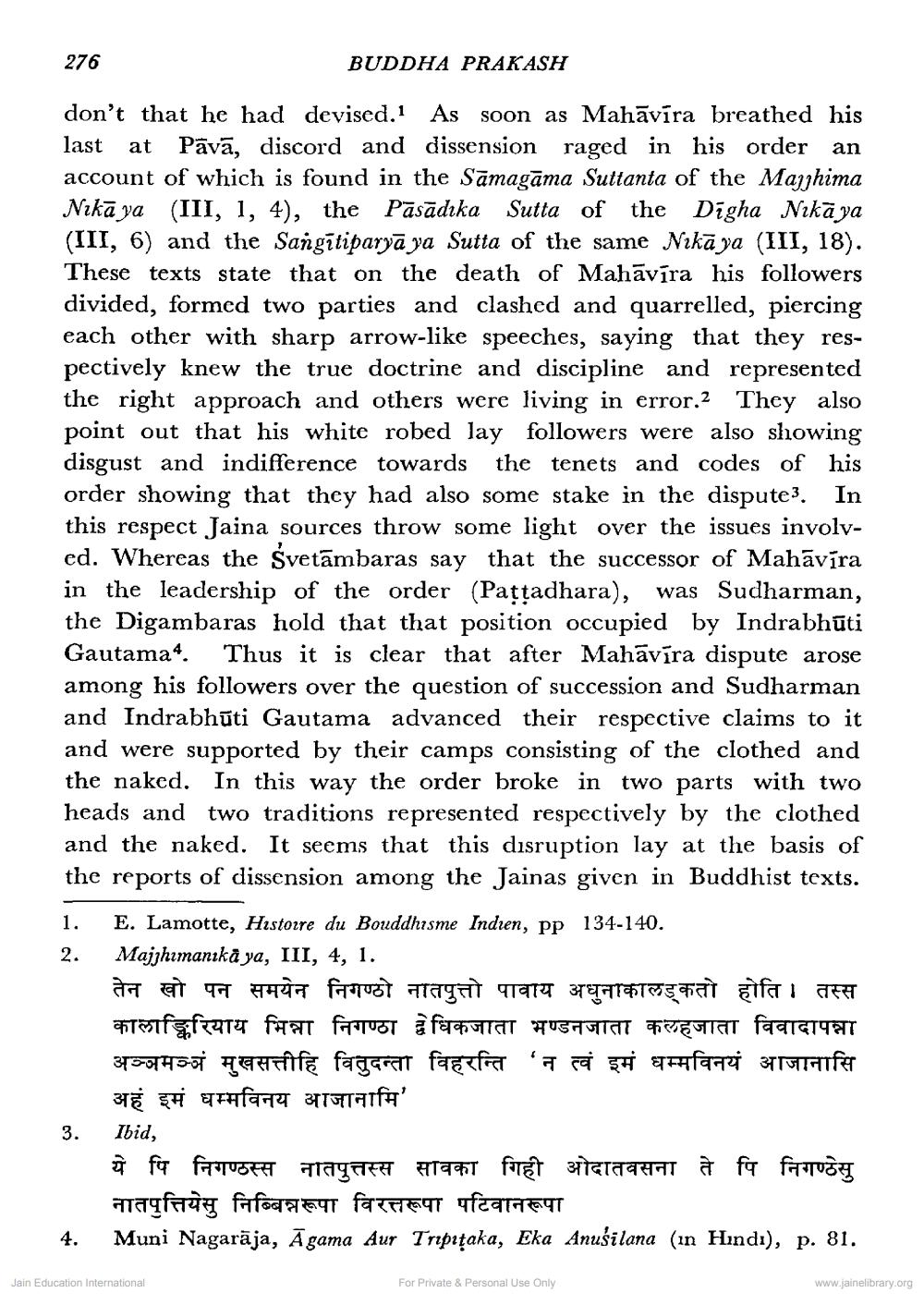________________
276
BUDDHA PRAKASH
don't that he had devised.1 As soon as Mahāvīra breathed his last at Pāvā, discord and dissension raged in his order an account of which is found in the Sāmagāma Suttanta of the Majjhima Nikāya (III, 1, 4), the Pasādıka Sutta of the Dīgha Nikāya (III, 6) and the Sangītiparyā ya Sutta of the same Nikā ya (III, 18). These texts state that on the death of Mahāvīra his followers divided, formed two parties and clashed and quarrelled, piercing each other with sharp arrow-like speeches, saying that they respectively knew the true doctrine and discipline and represented the right approach and others were living in error. They also point out that his white robed lay followers were also showing disgust and indifference towards the tenets and codes of his order showing that they had also some stake in the dispute3. In this respect Jaina sources throw some light over the issues involved. Whereas the Svetāmbaras say that the successor of Mahāvīra in the leadership of the order (Pattadhara), was Sudharman, the Digambaras hold that that position occupied by Indrabhūti Gautama". Thus it is clear that after Mahāvīra dispute arose among his followers over the question of succession and Sudharman and Indrabhūti Gautama advanced their respective claims to it and were supported by their camps consisting of the clothed and the naked. In this way the order broke in two parts with two heads and two traditions represented respectively by the clothed and the naked. It seems that this disruption lay at the basis of the reports of dissension among the Jainas given in Buddhist texts. 1. E. Lamotte, Histoire du Bouddhisme Indien, pp 134-140. 2. Majjhimanıkā ya, III, 4, 1.
तेन खो पन समयेन निगण्ठो नातपुत्तो पावाय अधुनाकालड्कतो होति । तस्स कालाकिरियाय भिन्ना निगण्ठा द्वेधिकजाता भण्डनजाता कलहजाता विवादापन्ना अञ्जमधे मुखसत्तीहि वितुदन्ता विहरन्ति 'न त्वं इमं धम्मविनयं आजानासि
अहं इमं धम्मविनय आजानामि' 3. Ibid,
ये पि निगण्ठस्स नातपुत्तस्स सावका गिही ओदातवसना ते पि निगण्ठेसु
नातपुत्तियेसु निब्बिनरूपा विरत्तरूपा पटिवानरूपा 4. Muni Nagarāja, Āgama Aur Tripitaka, Eka Anušilana (in Hındı), p. 81.
Jain Education International
For Private & Personal Use Only
www.jainelibrary.org




